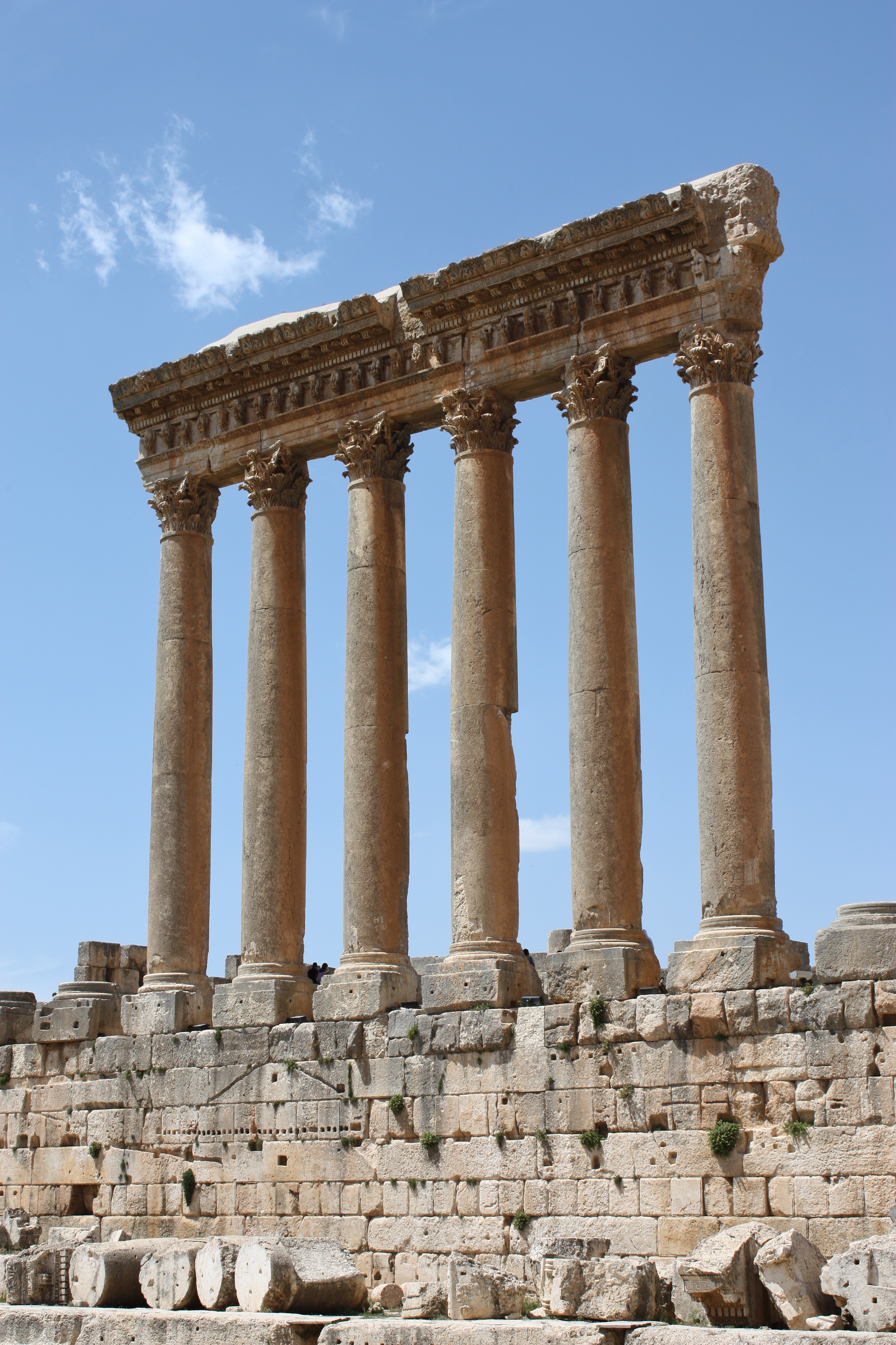|
Heliopolis (Roman Phoenicia)
Baalbek (; ar, بَعْلَبَكّ, Baʿlabakk, Syriac-Aramaic: ܒܥܠܒܟ) is a city located east of the Litani River in Lebanon's Beqaa Valley, about northeast of Beirut. It is the capital of Baalbek-Hermel Governorate. In Greek and Roman times Baalbek was also known as Heliopolis (, Greek for "Sun City"). In 1998 Baalbek had a population of 82,608, mostly Shia Muslims, followed by Sunni Muslims and Christians. It is home to the Baalbek temple complex which includes two of the largest and grandest Roman temple ruins: the Temple of Bacchus and the Temple of Jupiter. It was inscribed in 1984 as an UNESCO World Heritage site. Name A few miles from the swamp from which the Litani (the classical Leontes) and the Asi (the upper Orontes) flow, Baalbek may be the same as the ''manbaa al-nahrayn'' ("Source of the Two Rivers"), the abode of El in the Ugaritic Baal Cycle discovered in the 1920s and a separate serpent incantation. Baalbek was called Heliopolis during the Roman ... [...More Info...] [...Related Items...] OR: [Wikipedia] [Google] [Baidu] |
Balbec, Indiana
Balbec is an unincorporated area, unincorporated community in Penn Township, Jay County, Indiana, Penn Township, Jay County, Indiana, Jay County, Indiana. History A post office was established at Balbec in 1865, and remained in operation until it was discontinued in 1919. The community was likely named after Baalbek, in Lebanon. References [...More Info...] [...Related Items...] OR: [Wikipedia] [Google] [Baidu] |
Temple Of Jupiter, Baalbek
The Temple of Jupiter is a colossal Roman temple, the largest of the Roman world, situated at the Baalbek complex in Heliopolis Syriaca (modern Lebanon). The temple served as an oracle and was dedicated to Jupiter Heliopolitanus. It is not known who commissioned or designed the temple, nor exactly when it was constructed. Work probably began around 16 BC and was nearly complete by about AD 60. It is situated at the western end of the Great Court of Roman Heliopolis, on a broad platform of stone raised another above the huge stones of the foundation, three of which are among the heaviest blocks ever used in a construction. Cultic activity had long taken place at the site; the temple presumably replaced an earlier one, possibly using the same foundation. It was the biggest temple dedicated to Jupiter in all the Roman Empire. The columns were 19.9 meters high with a diameter of nearly 2.5 meters: the biggest in the classical world. It took three centuries to create this colo ... [...More Info...] [...Related Items...] OR: [Wikipedia] [Google] [Baidu] |

